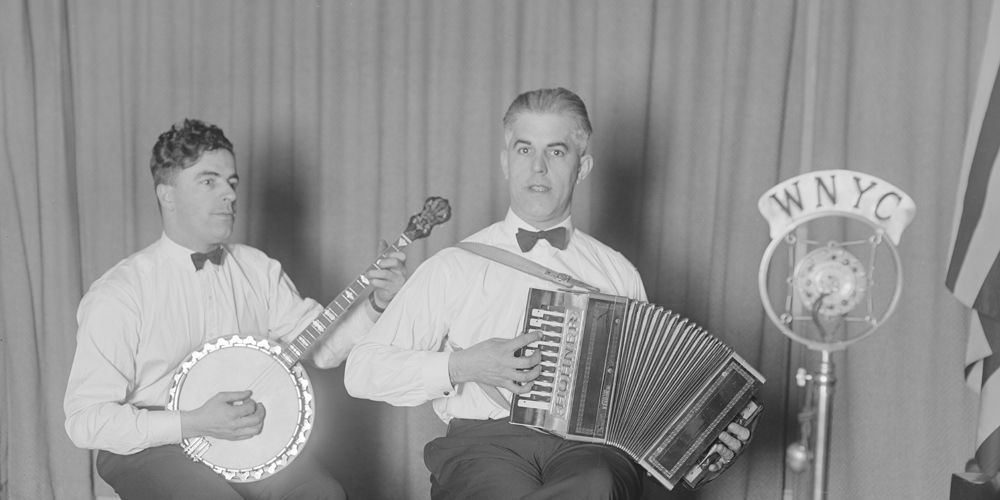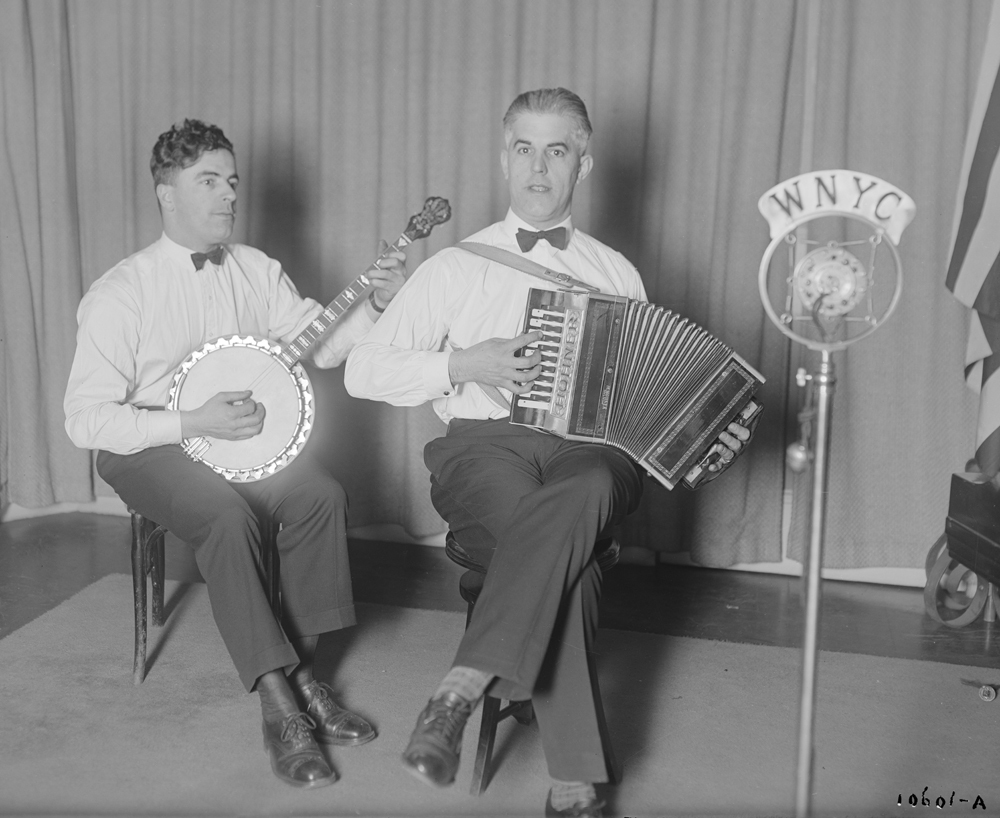

The Flanagans – button accordionist Joe, banjo player Mike and guitarist Louis – were one of the most popular and prolific Irish recording groups of the 78 rpm era. From 1921 until 1933, the brothers released more than 100 discs on a variety of labels. Joe was one of the most accomplished accordionists of his era, playing a uniquely constructed two-row accordion with piano-style keys. Mike’s innovative melody playing on the tenor banjo single-handedly made what had been a vehicle for chordal accompaniment into a lead voice in Irish traditional music. Louis contributed accompaniment on a double-necked Stella harp guitar. Mouth organ, Jew’s harp, banjo-guitar, and even the kazoo also featured in the brothers’ instrumental arsenal. Ed Geoghegan, the best of the era’s Irish piano accompanists, was a frequent collaborator and some discs featured orchestral instruments.
Like many successful Irish entertainers in New York, the Flanagans straddled two musical worlds. They excelled at playing purely traditional Irish dance tunes (even if on non-traditional instruments) but also performed and recorded novelty tunes, vaudeville songs (most famously a cover of the 1890 hit “My Irish Molly O”) and comic routines. Notices of their live bookings, radio broadcasts and new recordings filled the pages of New York’s Irish weeklies in the 1920s. Donovan’s (aka “the Bucket of Blood”) on Columbus Circle, one of the biggest Irish ballrooms in New York, was a favorite venue. A key to the group’s success as dance musicians in the era before modern sound amplification was the sheer volume of Joe’s accordion and the cutting power of Mike’s banjo.
The oldest brother, Arthur Joseph “Joe” Flanagan, was born in 1894 in Philadelphia, where his parents Arthur (a melodeon player) and Ellen Flanagan (a singer) had emigrated in the 1890s from Waterford City. The family later returned to Waterford, where Louis was born in 1896 and Michael in 1897, before moving again in 1911 to the USA, this time settling in Albany, New York. New York City beckoned, however, and the brothers spent the Roaring 20’s steadily working pedestrian day jobs while playing music professionally on nights and weekends. They made their first 78 rpm disc in December 1921 and carried on successfully until the Great Depression put a huge dent in the market for recordings of all sorts. Their last disc (“The Half Crown Song” backed by the hornpipes “Sunshine ; Off to California”) was recorded for Columbia in 1933 with tenor guitarist and tenor banjo player Whitey Andrews.
Joe Flanagan died in 1940, pre-deceased in the mid-1930s by Louis. Mike returned to Albany and maintained a low-key local musical career for many years, often playing in Catskills Irish resorts. Rediscovered by Irish banjo great Mick Moloney and fiddle virtuoso Frankie Gavin, Mike enjoyed a late-in-life return to celebrity. Moloney produced a reissue LP of Flanagan Brothers music for Topic Records in 1979. Back in Ireland, Gavin’s group De Danann revived “My Irish Molly O” in 1981, along with several of the Flanagans’ 78 rpm-era dance tunes. Mike himself visited Ireland in 1983 where he was honored with a reception by the Lord Mayor of Galway and given a grand musical send-off at Shannon Airport. He passed away in 1990 at the age of 93.
